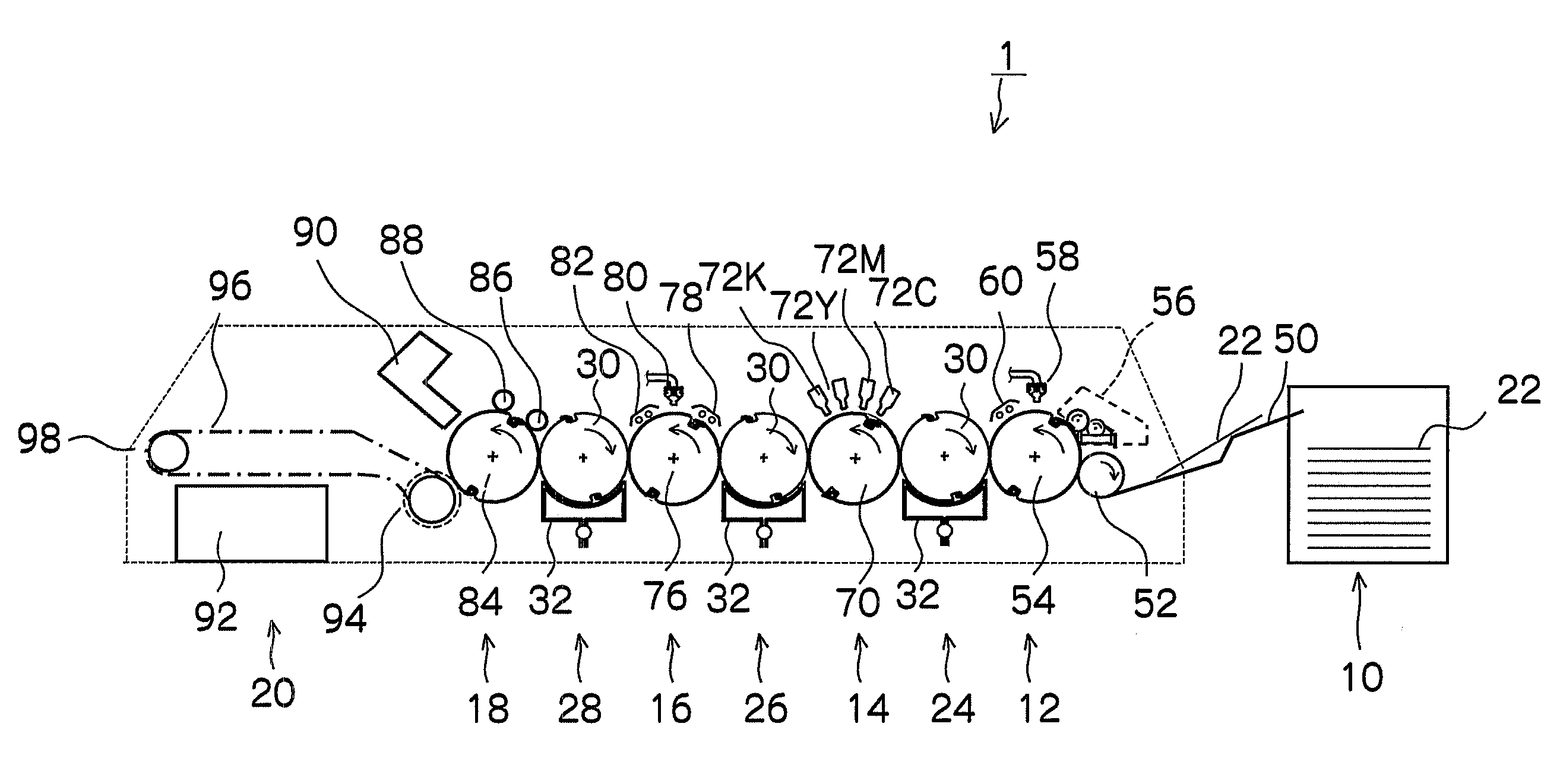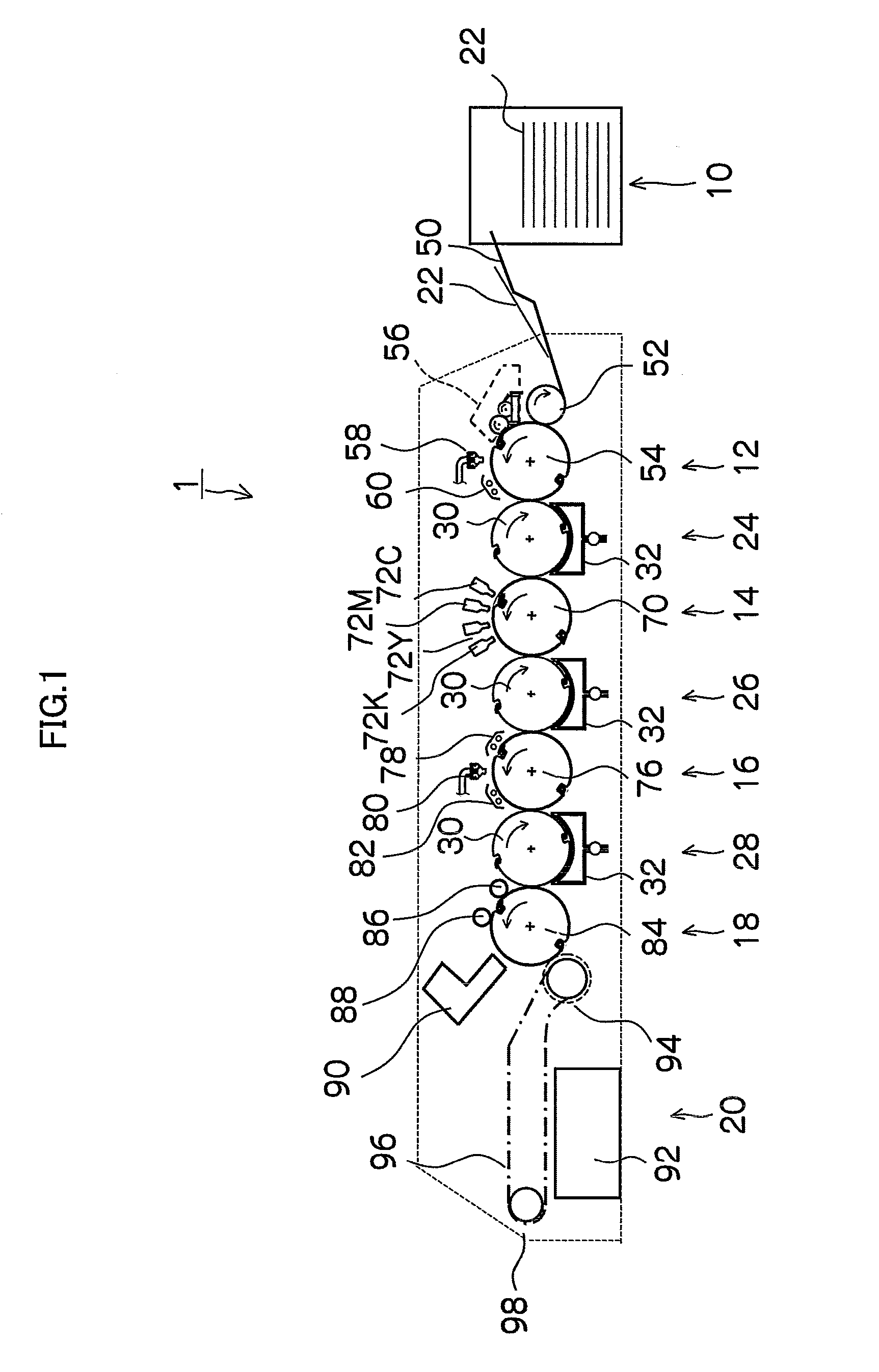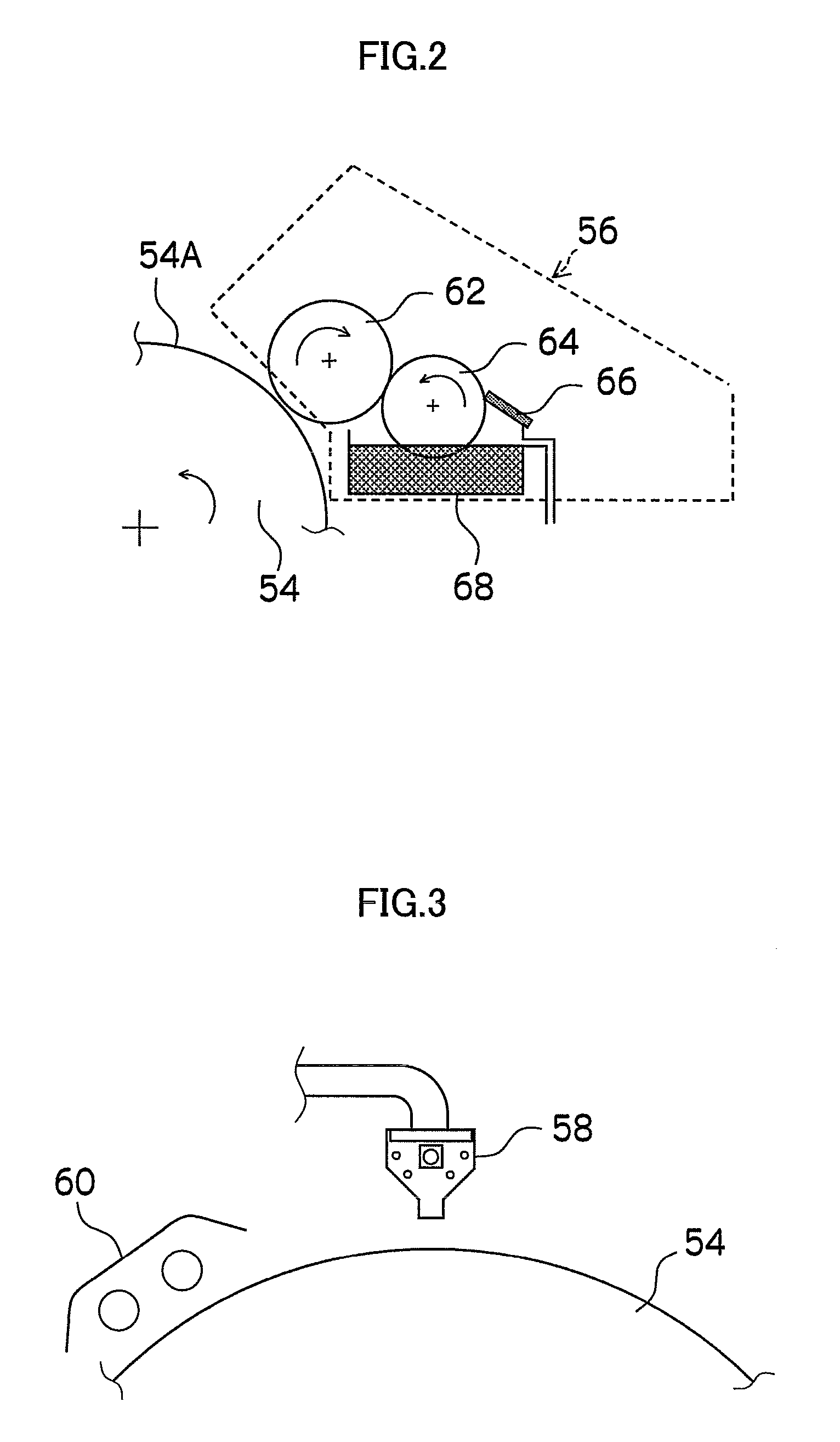Inkjet recording method and apparatus
a recording method and inkjet technology, applied in the field of inkjet recording methods and inkjet recording apparatuses, can solve the problems of “inability to achieve image strength, image quality is required, image quality is affected, etc., to achieve the effect of suppressing curling, improving image quality, and improving image strength
- Summary
- Abstract
- Description
- Claims
- Application Information
AI Technical Summary
Benefits of technology
Problems solved by technology
Method used
Image
Examples
experiment a
[0370]There follows a description of experiments carried out to compare the image quality (present invention) obtained when each of the inkjet recording apparatus and the aqueous ink used in image formation satisfy the conditions of the present invention and the image quality (comparative examples) obtained when at least one of the inkjet recording apparatus and the aqueous ink used in image formation does not satisfy the conditions of the present invention.
[0371]On the treatment liquid drum 54 (diameter 450 mm), treatment liquid was applied in a thin film (having a thickness of 2 μm) by the treatment liquid application unit 56 onto the whole surface of a recording medium 22 taken up onto the image formation drum 70 from the paper feed unit 10 of the inkjet recording apparatus shown in FIG. 1. In this, a gravure roller was used as the treatment liquid application unit 56. Thereupon, the recording medium 22 onto which the treatment liquid had been applied was dried by means of the wa...
experiment b
[0429]In Experiment B, experiments were carried out in the similar conditions with Experiment A while imparting the treatment liquid in all experiments and altering the types of recording media. More specifically, the experiments were carried out using Urite (84.9 g / m2) and New Age (104.7 g / m2) in Experiment B, whereas Tokubishi Art double-side N 104.7 g / m2 was used as the recording medium in Experiment A. The corresponding results are shown in the table in FIG. 16.
[0430]As can be seen from the table in FIG. 16, similar beneficial effects as Experiment A were obtained even when the type of recording medium was varied. In other words, in all of the examples 2-1 to 2-12 which satisfied the conditions of the present invention in terms of both the inkjet recording apparatus and the ink, the evaluations of “fair” or above were obtained in respect of all of the items: landing interference, curl, image contraction, text reproducibility and image strength. In particular the examples 2-1 to ...
experiment c
[0431]In Experiment C, experiments were carried out in the similar conditions with Experiment A while altering the types of treatment liquids. The recording medium used was Tokubishi Art double-side N 104.7 g / m2, and the inks used were C-2, M-2, Y-2 and Bk-2. Furthermore, the treatment liquids used were the treatment liquids 1 to 4 described below.
[0432]Citric acid (manufactured by Wako Pure Chemical Industries): 16.7%[0433]Diethylene glycol monomethyl ether (manufactured by Wako Pure Chemical Industries): 20.0%[0434]Zonyl FSN-100 (manufactured by Dupont): 1.0%[0435]Deionized water: 62.3%
[0436]The organic solvent (diethylene glycol monomethyl ether) in the treatment liquid 1 was replaced with 20.0% of diethylene glycol monobutyl ether (manufactured by Wako Pure Chemical Industries).
[0437]The acid (citric acid) in the treatment liquid 1 was replaced with 16.7% maronic acid.
[0438]The organic solvent (diethylene glycol monomethyl ether) in the treatment liquid 1 was replaced with 20.0%...
PUM
| Property | Measurement | Unit |
|---|---|---|
| boiling point | aaaaa | aaaaa |
| acid value | aaaaa | aaaaa |
| acid value | aaaaa | aaaaa |
Abstract
Description
Claims
Application Information
 Login to View More
Login to View More - R&D
- Intellectual Property
- Life Sciences
- Materials
- Tech Scout
- Unparalleled Data Quality
- Higher Quality Content
- 60% Fewer Hallucinations
Browse by: Latest US Patents, China's latest patents, Technical Efficacy Thesaurus, Application Domain, Technology Topic, Popular Technical Reports.
© 2025 PatSnap. All rights reserved.Legal|Privacy policy|Modern Slavery Act Transparency Statement|Sitemap|About US| Contact US: help@patsnap.com



